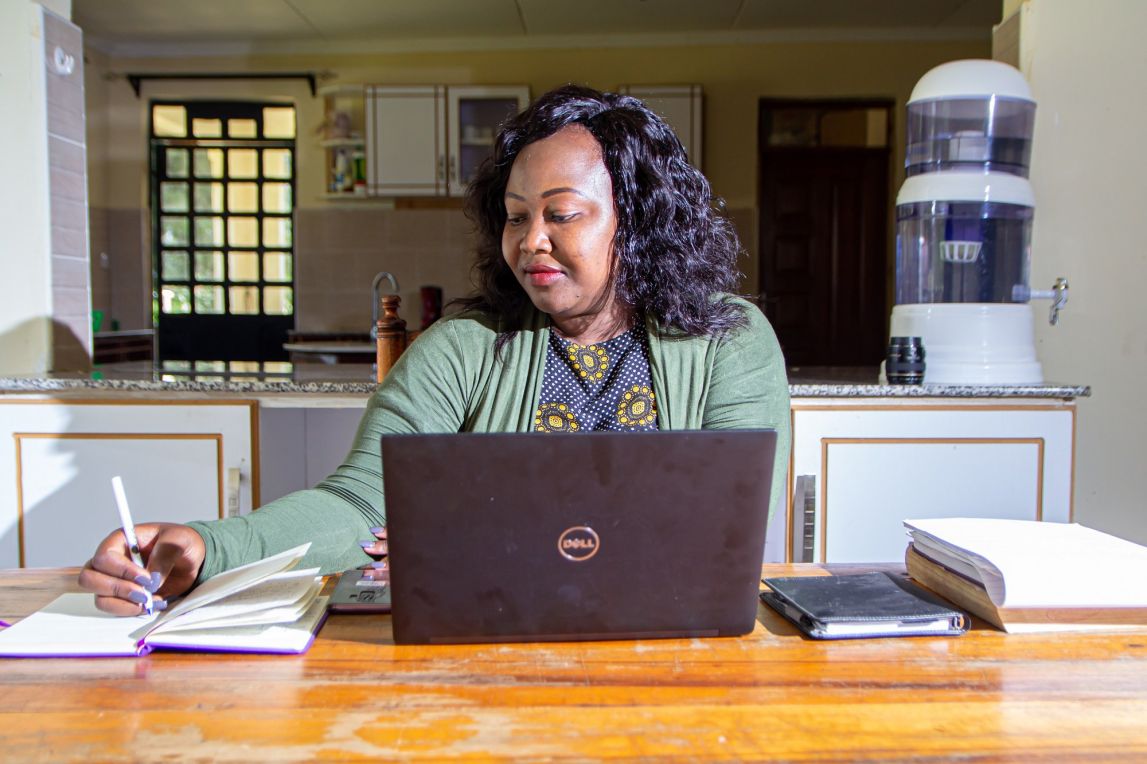#RemoteWork Hacks: Communicating Effectively During the Pandemic
Good communication skills are essential anytime, but during COVID-19, they have proven to be indispensable. Remote work has meant many of us have had to rapidly adapt our communication styles and learn new communication skills - if you’re anything like us, you’ve probably spent a lot more time thinking about the tone and structure of your emails than you did before!

Jacqueline Sambu, on our Recruitment team, getting some work done from home
We asked four staff from across the organisation to share the tips and tricks that have helped ensure they’re able to communicate clearly and effectively with their teams, other key stakeholders and ultimately get their job done!
This is Part I of a two-part series on communicating effectively during a pandemic. To see part II, please click here.
Ibukun IBK Jaiyeola - Internal Communications
“It's tough to communicate when you haven't seen the person on the other end in a year or longer. For me, it's an especially acute feeling because of the nature of my job. As the Internal Comms lead, I am usually either bombarding people's inboxes or making their day by providing much-needed information. Regardless of how my communication meets people, I try to aim for the following things:
- Make it easy for people to find the what/how of my message. Sometimes it's evident in the title, and at other times it needs a few bold and underlined highlights to drive it in.
- Where possible, put a face to it. I find that emails or messages with memes or faces of colleagues tend to do better than emails with just words.
- Emote! I want people to imagine they've had a chat with me when they read my emails, so I use descriptive words and take advantage of emojis when I can. Of course, you can’t get away with them in every email, but sneak them in when appropriate 😉
- Explore other channels: I try to balance between live question-and-answer sessions because I know not everything needs to be in an email.
- Above all, it is important to remember that you are still dealing with people. Even when you haven't seen them or heard from them in a while, at the end of every email is another person. Start with hello and end with thanks.
Vierra Nyakundi - Corporate Operations
“For starters, I am a believer in error-free messages, particularly in professional contexts, so I depend on writing assistants, such as Grammarly, to ensure I send out concise, grammatical emails. One Acre Fund owns a corporate account with Grammarly that one can sign up for through Training and Development.
Secondly, I make sure to do prior preparation that includes having talking points for verbal communication. It allows me to order my thinking and ensures I pass along all essential details. This practice has been beneficial when having work-sensitive conversations with my team/peers.
Thirdly, I make sure to have someone else review any lengthy, org-wide, sensitive communication before sending it out. We all have blind spots in our communication, so a second pair of eyes to do a quality check helps. I also try to keep acronyms to a minimum or avoid them altogether. Acronyms can be ambiguous, so I simplify my writing instead so I don’t have to use them.
Lastly, besides the professional challenges the pandemic brings, people struggle, often quietly, with a lot of other personal stuff. Communicating empathetically tells people that their struggles have been ‘heard’ and acknowledged. Communicating with empathy means speaking to someone how you would like to be spoken to. It is easy to forget or brush aside some obvious challenges because COVID seems to have been around for so long. So I try to have grace (for others and myself). I find that small talk is the unsung hero of pre-meeting “let-us-wait-for-others-to-join” time.”



